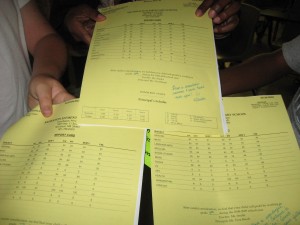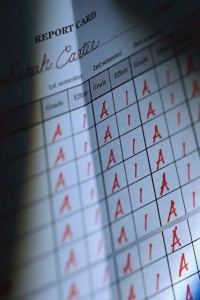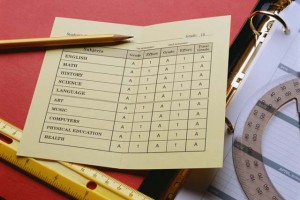In this Educational Focus, let’s take a look at the other college aptitude test that American juniors and seniors typically take as part of the college admissions process: the ACT.
First given in 1959, the ACT is not as well known as the SAT, even though it is accepted by all four-year colleges and universities in the U.S. As a general rule, colleges and universities on the East and West Coasts tend to prefer the SAT, whereas the ACT is the test of choice for students planning on attending schools in the Midwest and South.
Like the SAT, the ACT is administered on a Saturday, and students who cannot take the test on Saturday for religious reasons can request at registration to take the test the following Sunday. The test is generally offered six times a year: September, October, December, February, April, and June.
The format and scoring of the ACT differs from the SAT. Students taking the ACT are tested in four areas: English, Math, Reading, and Science Reasoning, with an optional writing portion that was added in 2005. The scores for each subject range from 1 – 36. In addition to individual subject scores, students also receive a composite score, which is the average of all four tests. All the subject tests (with the exception of the writing test, of course) are multiple choice tests. Unlike the SAT, however, there is no penalty for wrong answers, so it is advantageous to guess if one does not know the answer.
English
The English section of the test is 45 minutes in length, and consists of 75 questions on usage, grammar, punctuation, and rhetorical skills.
Mathematics
The mathematics section of the test is 60 questions and 60 minutes in length. Topics covered include pre-algebra, elementary algebra, intermediate algebra, coordinate geometry, geometry, and elementary trigonometry. Calculators are permitted, but only if they are not on a list of prohibited models, or are modified according to the ACT’s calculator policy. The mathematics section is the only section in which there are five answer choices rather than four.
Reading
The reading section of the test is 35 minutes in length, and consists of 40 questions based on reading comprehension. Types of reading passages include prose fiction, social science, humanities, and natural science.
Science Reasoning
The science reasoning section of the test is also a 40-question, 35-minute test. Rather than testing specific scientific knowledge, students are asked to read passages of a more technical or scientific nature, and then answer questions based on these passages. The questions are designed to assess the student’s ability to interpret, analyze, and evaluate the information in the passages, as well as test the student’s ability to reason and solve problems.
Writing (Optional)
The optional writing section of the ACT mirrors that of the SAT. It is 30 minutes long, and students are to write an essay based on a given prompt. Two readers each evaluate the essay and assign it a score of 1 – 6 (6 being best). Essays that are blank, off-topic, not written in English, not written in no. 2 pencil, or illegible automatically receive a score of 0.
Although the ACT is an assessment for students planning to attend college, some states, such as Colorado and Illinois, require all high school students (whether or not they intend to go to college) to take the ACT as a way of assessing school performance.
Based on data from college-bound seniors who took the ACT in 2006, the median composite score was between 20 and 21. Students who scored 28 or better were in the 90th percentile (meaning that students with a score of 28 or more were in the upper 10% of all test-takers).
There is no official conversion chart between SAT scores and ACT scores; however, some colleges have established their own charts, based on scores of students who took both tests. For comparison, the following is a chart used by the University of California:
SAT (out of 1600)……..ACT Composite
1600…………………………..36
1560-1590…………………35
1520-1550…………………34
1480-1510…………………33
1440-1470…………………32
1400-1430…………………31
1360-1390…………………30
1320-1350…………………29
1280-1310…………………28
1240-1270…………………27
1200-1230…………………26
1160-1190…………………25
1120-1150…………………24
1080-1110…………………23
1040-1070…………………22
1000-1030…………………21
960-990…………………….20
920-950…………………….19
880-910…………………….18
840-870…………………….17
800-830…………………….16
760-790…………………….15
720-750…………………….14
680-710…………………….13
640-670…………………….12
600-630…………………….11
Google





